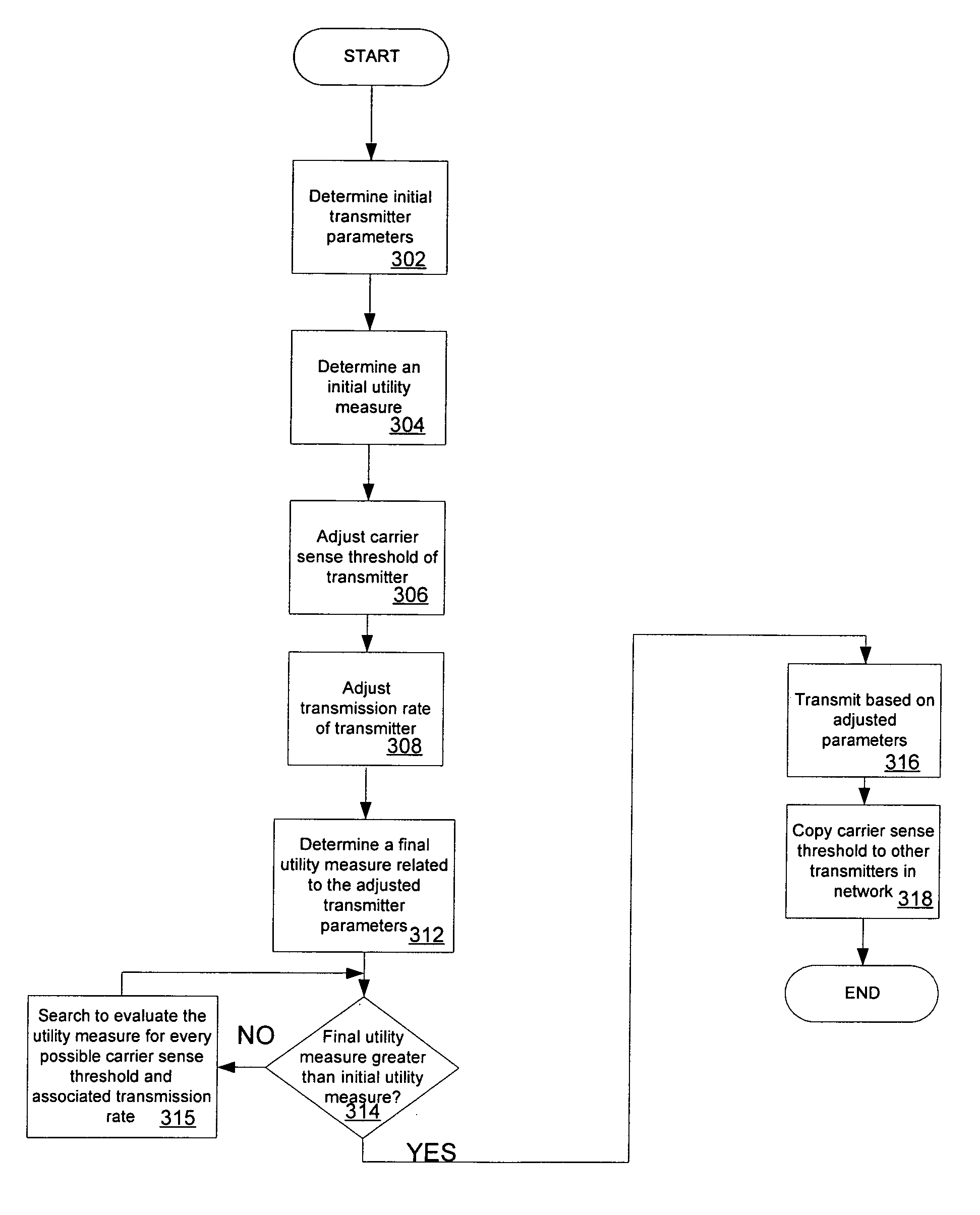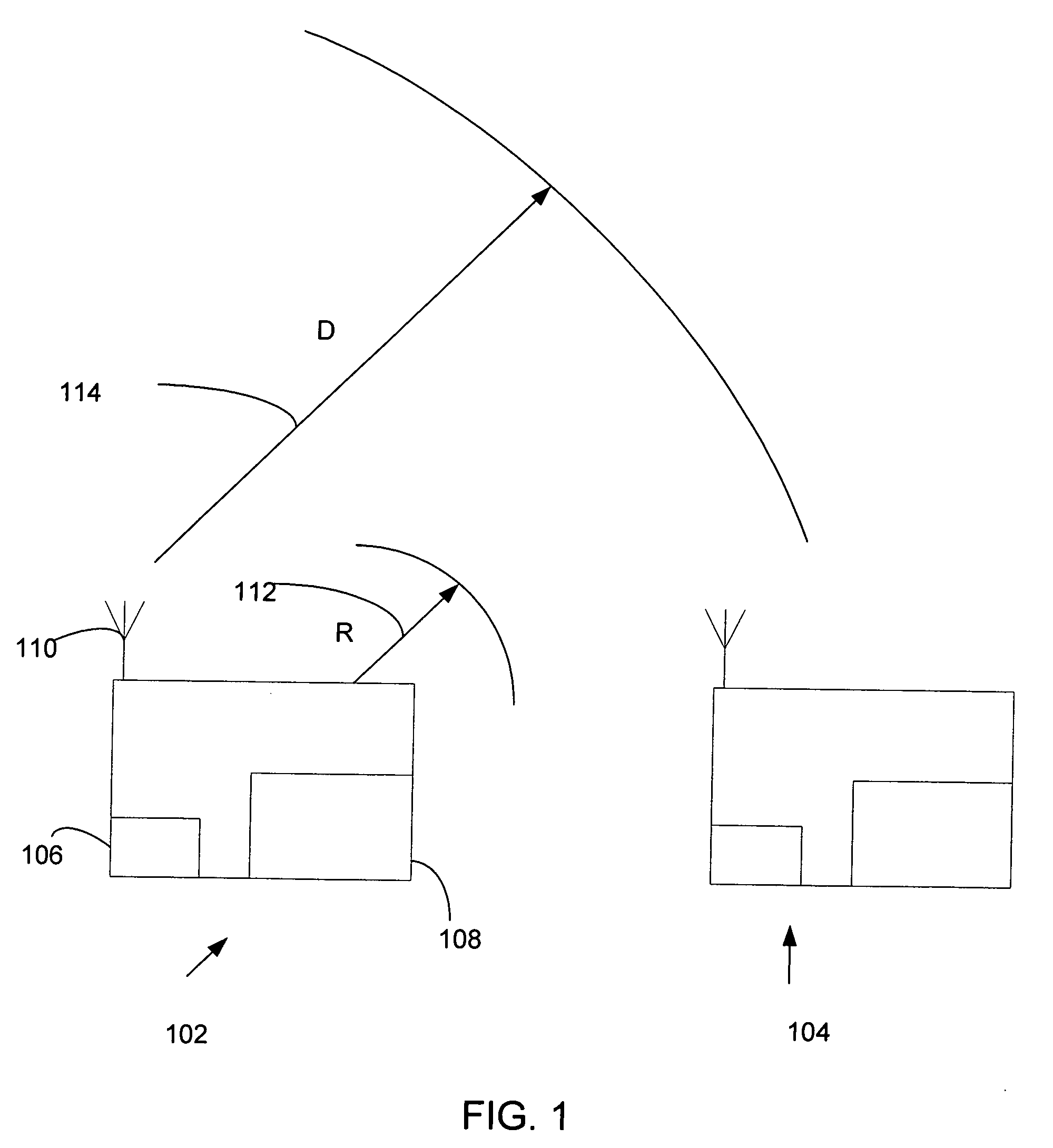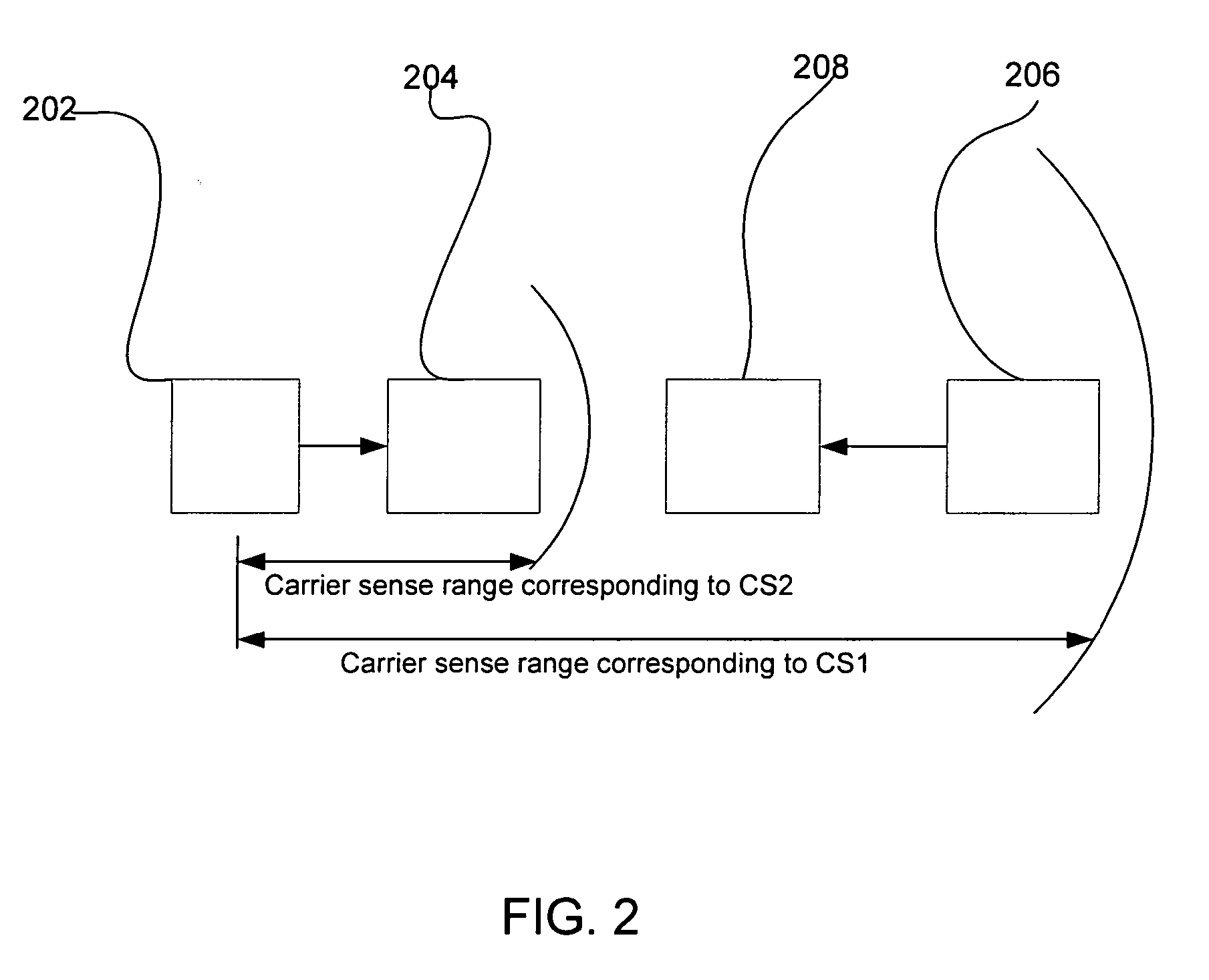System for spatial backoff contention resolution for wireless networks
a wireless network and backoff contention technology, applied in the field of data transmission in wireless networks, can solve the problems of poor link quality, inability to fully explore spatial reuse, and inability to achieve the benefits of “spatial backoff” and other problems, to achieve the effect of reducing the overhead of resolving “local” channel contention, reducing channel bit rate, and reducing the number of competing stations
- Summary
- Abstract
- Description
- Claims
- Application Information
AI Technical Summary
Benefits of technology
Problems solved by technology
Method used
Image
Examples
Embodiment Construction
[0024] Spatial backoff methods allow source stations to search for appropriate carrier sense threshold and transmission rate operating points to improve network aggregate throughput. For a given a carrier sense threshold CSth, the corresponding Carrier Sense Range D may be defined as the minimum distance allowed between two concurrent transmitters. A larger carrier sense threshold may lead to a smaller carrier sense range.
[0025]FIG. 1 illustrates a wireless network system 100. The network system 100 may include one or more transmitter stations, such as transmitters 102 and 104. The transmitters 102 and 104 may include receivers 106, secondary radio modules 108, and transmitting antennae 110. The transmitters 102 and 104 may be in a dense network system, where the transmitters 102 and 104 are located close to one another relative to their transmission ranges. The transmitters 102 and 104 may be uniformly and independently distributed in an area of A. A common and fixed transmission ...
PUM
 Login to View More
Login to View More Abstract
Description
Claims
Application Information
 Login to View More
Login to View More - R&D
- Intellectual Property
- Life Sciences
- Materials
- Tech Scout
- Unparalleled Data Quality
- Higher Quality Content
- 60% Fewer Hallucinations
Browse by: Latest US Patents, China's latest patents, Technical Efficacy Thesaurus, Application Domain, Technology Topic, Popular Technical Reports.
© 2025 PatSnap. All rights reserved.Legal|Privacy policy|Modern Slavery Act Transparency Statement|Sitemap|About US| Contact US: help@patsnap.com



